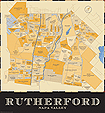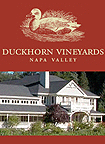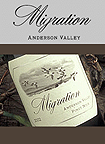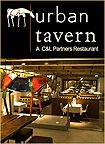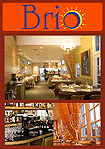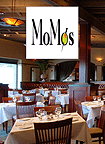
Andy
Beckstoffer's Imprint On The Wine Industry
By
Ellen Walsh
Take
a handful of sandy soil; blend with a fine vintage sediment from
a December flood; toss until stable; add a pinch of ground fog;
and bake at 100+ degrees in the warm California sun. Voila! You've
just described a recipe for success in the Napa Valley.
While
Mother Nature can take the bulk of the credit as Valley architect
of record, it's the touch of man that has tamed the land and produced
one of the most breathtaking, productive and exclusive wine regions
of the world. And, one of these men is Andy Beckstoffer, viticulturist
and entrepreneur.
Andy
has spent more than 30 years planting vineyards and cultivating
grapes. His footprints can be found in vineyards from Carneros
to Yountville to Calistoga to Lake and Mendocino Counties. Wherever
he steps innovation follows.
Andy
grew up in Richmond, Virginia. After attending Virginia Tech on
a football scholarship, doing a stint in the Army and earning
an M.B.A. from Dartmouth's Amos Tuck School of Business, he settled
in California in 1966 and went to work for Heublein. By the early
70ís his career had skyrocketed. In 1970, Heublein formed
a small subsidiary, Vinifera Development Company, and named Andy
president. The following years were turbulent in the California
wine industry. Prices plummeted and growers suffered. Andy paid
close attention to problems as well as opportunities.
Being
in the right place at the right time is another Beckstoffer trait.
In 1975 opportunity shined and Andy became a founding member of
the Napa Valley Grape Growers Association and their first President.
It was at this time that he introduced his revolutionary idea
of basing the price of a ton of grapes on the future price of
a bottle of wine. Mondavi and Christian Brothers quickly adopted
the new formula and wine grapes finally became a valued specialty
product, no longer a commodity. This change of mindset completely
changed the role of the grower in making fine wines.
A
crowning achievement came in 1986 when Andy was hailed as the
"chief architect" of the 75 percent rule, which states
that 75% of the wine made in the Napa Valley Agricultural Preserve,
be made from Napa Valley grapes. Andy also played an important
role in the Napa County Winery Definition Ordinance (WDO), which
defined more tightly how wineries were permitted and licensed
in Napa County, protecting agriculture in the face of significant
development.
In
1994, Andy was a founding member of The Rutherford Dust Society.
He remains on the Society's Board of Directors and is the current
President. In his position he has the opportunity to take a larger
view of the California wine industry. What he sees distresses
him. The shrinking American dollar abroad has left many of Napa's
great wineries susceptible to foreign acquisition. "The problem
is succession planning," says Andy. "Many of the 400+
wineries here in the Napa Valley are ripe for acquisition, and
many will be forced to sell because they don't have a succession
plan for the future."
Andy is referring of course, to the sale of Napa's Chateau Montelena
to Parisian Michel Reybier of Cos d'Estournel this past July.
The winery is most famous for its 1976 Judgment of Paris win for
its 1973 Montelena Chardonnay. Observers of the famed French winery's
interest in this American winery left some quite nervous, driving
the point home that the weak dollar compared to the Euro left
some of the region's most prized possessions prime targets for
such a take over.
There
was quite a bit of relief when two of the region's other noted
sales, Stags Leap and Duckhorn, brought very high sums, and stayed
"home" to boot.
The
purchase of Stags Leap to a joint venture partnership of Chateau
St. Michelle Wine Company of Washington for $185M, and the purchase
of Duckhorn Winery by a financial investment firm out of Menlo
Park for $250M, kept the wineries intact, and in America. "But",
Beckstoffer warns, "If wineries don't plan for future succession,
they will be forced to accept offers from foreign investors in
the future." The element of planning, or the lack thereof,
is the key to looking ahead and seeing what the future holds.
What is happening in the Napa Valley, is that the supply of independent
grape growers continues to shrink, as wealthier Americans buy
up the land and build their exquisite estates. There is not going
to be any more land opening up in the Rutherford region anytime
soon.
That
is why Beckstoffer keeps his finger on the pulse of fellow viticulturists
and wineries. With his commitment to producing the greatest grape
in order to make the greatest wine, he would like to see the region
that he has invested in so dearly stay intact, instead of split
apart.
By
comparison, the vineyard side is remaining stable, and you don't
see a lot of the grape growing vineyards changing hands. However,
50% of the grapes grown by farmers do not make wine, they sell
the grapes; but there is a limit to any more land opening up to
grow these grapes. This could potentially be a problem.
If
grape growing ceases to be profitable, then you will cease to
see grape growing," says Beckstoffer. "What is happening
there, in Napa, is that the supply of independent grapes is getting
smaller. It is crucial to make it a reasonable investment for
people. This is about insuring the future viability of the greatest
wine growing region in the world; the Napa Valley."
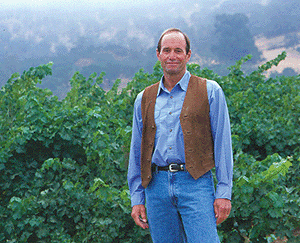
Andy
has left more than his footprints on the wine industry. He has
been a voice for growers and winemakers alike. He played by the
rules and also broke them; he demanded respect for growers and
got it; he invested where others dared not go; he challenged the
quality of corporate winemaking and won; he continues to find
problems and apply solutions.
And
remember, in a recent Wine Spectator review of California Cabernets,
ten of the top twenty-five wines were grown by Andy Beckstoffer.
Andy has indeed left a legacy for our industry.
NEWS
FLASH!
On November 5th, Wine Spectator posted an article that the sale
of Chateau Montelena fell through. For the complete story, click
here.
|




